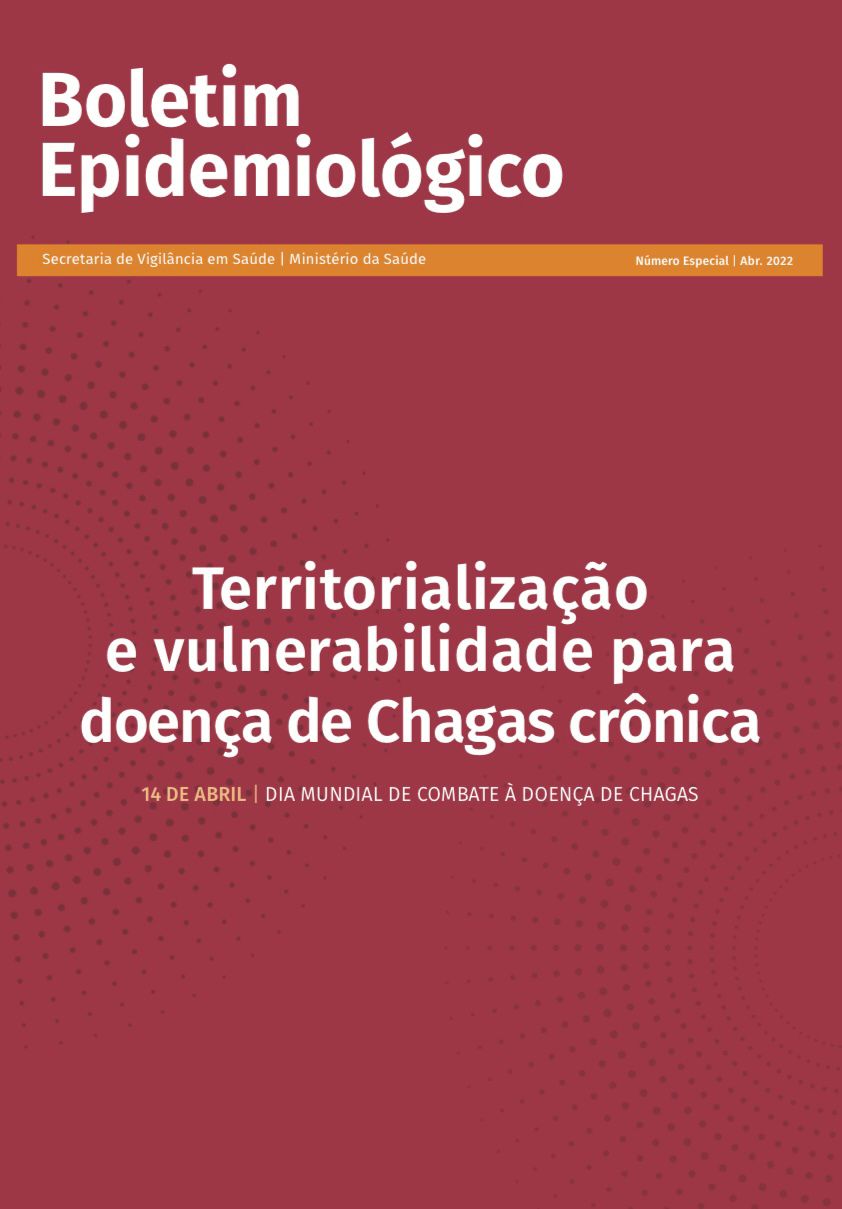
Epidemiological Bulletin – Territorialization and Vunerability for Chronic Chagas Diseases
.
14/04/2022
Chagas disease (CD) is part of the group of neglected tropical diseases of the World Health Organization (WHO) and the Ministry of Health of Brazil (MH), with a high prevalence and significant burden of morbidity and mortality, perpetuating a critical cycle of poverty. This is a chronic infectious condition, whose coping logic is close to chronic non-communicable diseases, requiring an adequate social response of national systems from their health care networks (HCN), the Unified Health System (SUS).
In the organization of the SUS, the health care network has in primary care the strategic space for control from singular territories, with ordering of assistance to other points of care, with structured comprehensive care lines. Recognition of the weaknesses of the health sector is essential for greater control of the disease and, in this perspective, it is essential to acquire more knowledge regarding epidemiological scenarios of CD and its transmission dynamics, involving infected people at risk of infection, different populations of the parasite, vector species and reservoirs of Trypanosoma cruzi. This integrated knowledge represents a central factor for the search for consistent and sustainable actions of management, surveillance, control and health and social care, coherent, effective, effective and efficient.
Territorialization can also express agreement regarding the delimitation of fundamental reference units, where the functions related to the health care set must be structured. The process of delineating spatial arrangements, the interaction of subjects, organizations and resources results from a movement that establishes the lines and links of structuring the relational field underlying the dynamics of the reality of CD at the local level. These different spatial configurations can give rise to different patterns of interdependence between places, actors, institutions, processes and flows, recommended in the SUS Management Pact. By recognizing, in local contexts, critical aspects related to the living conditions of people and families affected by CD, as well as the barriers of different natures for access to integrated surveillance, care and attention actions, it is possible to verify which are the most relevant factors for the maintenance of transmission and failures for the recent diagnosis, timely treatment, management of complications and physical and psychosocial rehabilitation.
In this context, the need to define the territorial limits of multidisciplinary action is reinforced, so that its attributes, of first contact with the health system, continuity, coordination and integration of actions, are effective in practice, configuring a line of care for the person with CD. Public health resorts to the territorialization of information, some years ago, as a tool for locating health-disease events, health units and demarcation of areas of activity.
The special edition of the Epidemiological Bulletin of the Health Surveillance Secretariat of the Ministry of Health (April 2022) Edition) brings an evaluation of the stages for the elaboration of a vulnerability index for CD health services, implying low suspicion and detection of chronic cases and the quality of life of people affected by the disease.
Check out the full document: (Click here)










